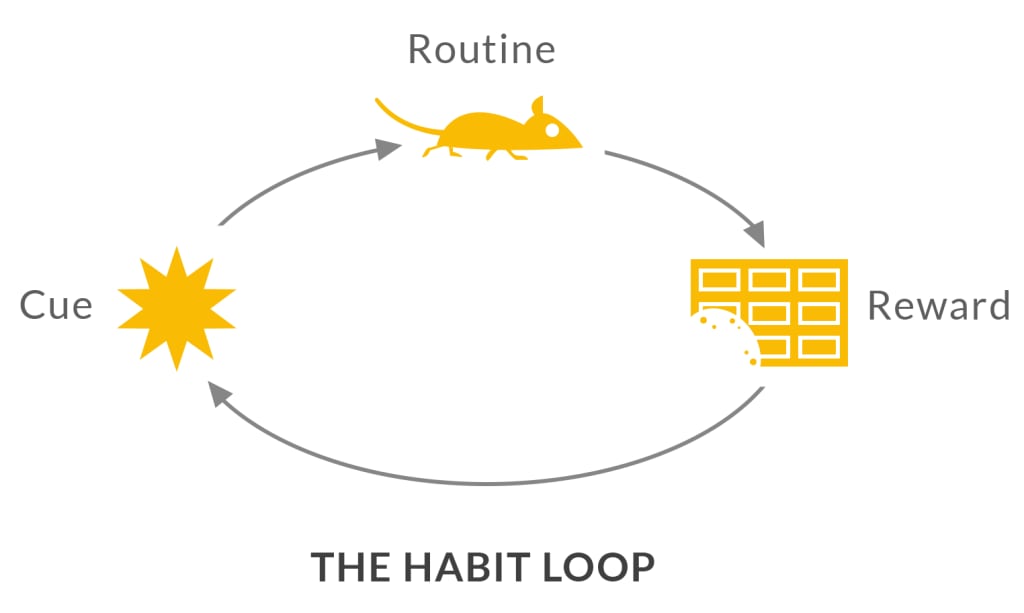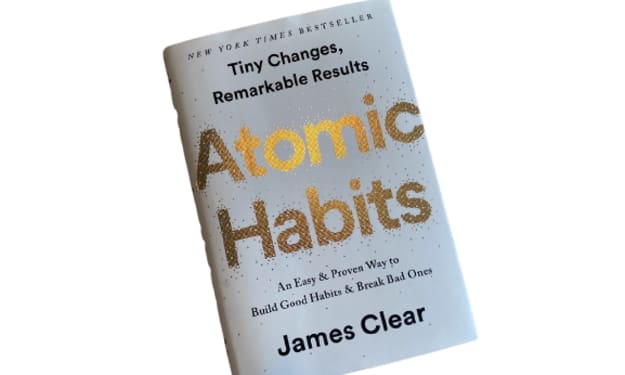"Unlock the Power of Habits with the Cue-Response-Reward Cycle: Insights from Atomic Habits
....is based on the process of associative learning, which is the process by which our brains learn to associate certain cues with certain behaviors and rewards.

There is scientific evidence supporting the cue-response-reward cycle as a fundamental concept in habit formation. The cycle is based on the process of associative learning, which is the process by which our brains learn to associate certain cues with certain behaviors and rewards.
Research has shown that habits are formed through a process of reinforcement learning, in which behaviors that are followed by positive outcomes (rewards) become more likely to occur again in the future. The cue-response-reward cycle is a mechanism that reinforces and strengthens habits over time.
Studies have also shown that the cue-response-reward cycle is mediated by the basal ganglia, a region of the brain that is involved in motor control, habit formation, and reward-based learning. When a habit is formed, the basal ganglia becomes more active in response to the cue, which triggers the habitual behavior and leads to the reward.
Overall, the science behind the cue-response-reward cycle provides a compelling explanation for how habits are formed and how they can be changed. By understanding the underlying mechanisms of habit formation, we can develop strategies to create new, positive habits and break old, negative ones.
Here is a breakdown of the on cycle cue-response-reward
The Cue
The cue is the trigger that initiates a habit. It is the environmental, situational, or emotional context that prompts the behavior. For example, if you habitually reach for a snack every time you feel stressed or anxious, then stress or anxiety would be your cue.
Cues can be external or internal. External cues include things like time of day, location, people, or objects. Internal cues are thoughts, emotions, or physical sensations. Understanding the cues that trigger your habits is the first step in changing them.
The Response
The response is the behavior or action that follows the cue. It is the habit itself. For example, if your cue is feeling stressed, and your response is to eat a snack, then the behavior of eating is the response.
The response can be positive or negative. Positive responses lead to positive outcomes, while negative responses lead to negative outcomes. The key is to identify responses that align with your goals and values.
The Reward
The reward is the outcome or consequence of the response. It is the reason why you perform the behavior. Rewards can be external or internal. External rewards include things like money, praise, or recognition. Internal rewards are things like feelings of accomplishment, satisfaction, or pleasure.
The reward is what reinforces the behavior and makes it more likely to occur again in the future. If the reward is positive, then the habit is reinforced, and the cycle continues. If the reward is negative, then the habit is discouraged, and the cycle is disrupted.
Breaking the Cycle
To change a habit, you need to disrupt the cue-response-reward cycle. You can do this by modifying the cue, changing the response, or altering the reward.
To modify the cue, you need to identify and change the environmental, situational, or emotional factors that trigger the habit. For example, if stress is your cue for eating, then finding alternative ways to manage stress, such as meditation or exercise, can disrupt the habit cycle.
To change the response, you need to identify and replace the behavior with a new, positive one. For example, if eating is your response to stress, then replacing it with a healthier behavior, like taking a walk or talking to a friend, can create a new, positive habit.
To alter the reward, you need to identify and replace the outcome or consequence of the behavior. For example, if the reward for eating is feeling better in the moment, then finding alternative ways to achieve that same feeling, such as through a relaxation technique or engaging in a hobby, can create a new, positive habit.
Conclusion
The cue-response-reward cycle is a powerful tool for understanding how habits form and how they can be changed. By identifying the cues, responses, and rewards that drive your habits, you can disrupt the cycle and create new, positive behaviors. The key is to be intentional and deliberate in your approach, and to focus on small, incremental changes that lead to lasting results. By applying the principles of the cue-response-reward cycle, you can build atomic habits that lead to greater success and fulfillment in all areas of your life.
About the Creator
WengKasa
My write up are about productivity and health






Comments
There are no comments for this story
Be the first to respond and start the conversation.